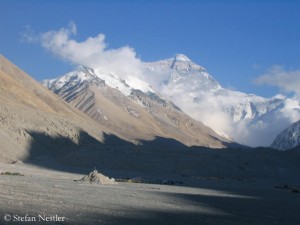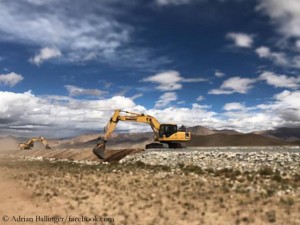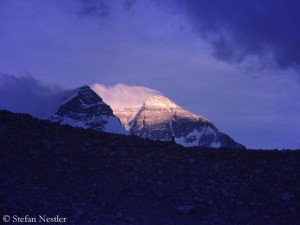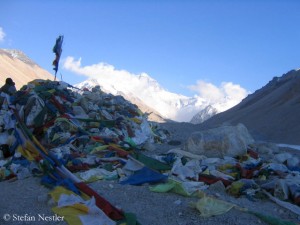China fuels the price spiral – and invests
Climbing on an eight-thousander in Tibet is getting more expensive, not only on Mount Everest. According to documents available to me, the Chinese Mountaineering Association (CMA) has significantly increased the prices for the climbing permits on Everest, Cho Oyu and Shishapangma, on average by more than 30 percent. Since the beginning of the year, the CMA claims 9,950 US dollars per mountaineer for the climb of the highest mountain on earth in case of four or more team members. So far the Everest Permit cost about 7,000 dollars per head. 7,400 dollars are now due for Cho Oyu, 7,150 dollar for climbing Shishapangma from the north side and 7,650 dollars for an ascent from the south side of the mountain. For smaller teams of up to three, the permit costs are even in a five-digit range: 19,500 dollars per person on Everest, 12,600 dollars each on Cho Oyu and Shishapangma.
Prices converge
For comparison: The Nepalese government requires 11,000 dollars for Everest in spring and 1,800 dollars for the other eight-thousanders in the country. However, this is the “naked” permit, while in Tibet some services are included, such as transportation to the base camp or the services of the liasion officer. Nevertheless, slowly but surely the expedition prices in China and Nepal are converging.
Market of the future
China has obviously discovered mountaineering as a growth sector. No wonder, after all more and more Chinese buy into commercial expeditions – not only in the local mountains, where they are forbidden to travel with foreign agencies. “China is the future market,” Mingma Gyalje Sherpa, head of the Nepalese operator “Dreamers Destination”, writes to me. “The Chinese have now started travelling and climbing in foreign countries.”
By train to base camp
The Chinese authorities are investing massively in infrastructure in Tibet. The road from the capital Lhasa to the 5,200 meter high Everest Base Camp – formerly on many sections only a dirty road – has meanwhile been paved completely. “As a tourist attraction, it’s one of the coolest roads I’ve seen anywhere on the planet,” the US expedition operator Adrian Ballinger enthused in spring 2016.
In the town of Gangkar, also known as Old Tingri, a huge mountaineering center is to be built by 2019, including a landing site for helicopter rescue flights. In Tingri, also an incineration plant is currently being built, the Swiss expedition operator Kari Kobler writes to me. Within three to four years there should be a railway connection close to Shishapangma Base Camp, Kari adds.
Unpredictable policy
The 61-year-old is an old hand on the Tibetan side of the Himalayas. Kobler has been organizing expeditions there for many years. Kari believes that the big changes will take place only in the coming years. “Up to now Everest has been very quiet, and we had an almost familiar relationship on the north side,” says Kobler, referring to the lower number of peak climbers, “only about 30 percent of the guests on the south side”. However, corruption is still a big problem, says Kari: “It’s incredible how autonomously Chinese politicians are operating in Tibet.” Shouldn’t the Tibetans be autonomous in China, according to the official version of the government in Beijing?
Despite higher prices and political uncertainties, Kobler does not think about switching to the Nepali side. The objective dangers are larger on the south side of Mount Everest, says Kari: “From my point of view, it is only a matter of time before something bad happens again. That’s why I prefer the unpredictable policy to of unpredictable dangers.”










